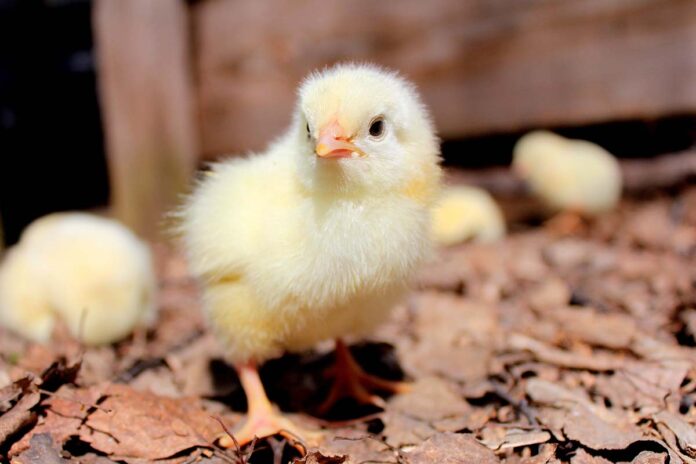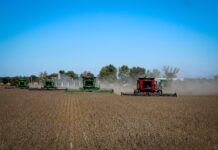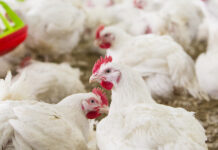
As poultry producers in Australia continue to limit antibiotic use, increasing numbers of alternative therapies and chemical biosecurity products are being used to overcome intensive farming stressors. These interventions tend to be chemically based and can lead to resistance if used incorrectly. The current paper investigates natural alternatives to some of these interventions and discusses if nature can suggest a more sympathetic solution for the bird and the environment while remaining biologically effective.
Antibiotic stewardship and the judicious use of antibiotics as treatment for specific disease occurrences, rather than using sub-therapeutic doses for growth promotion, are well established concepts within the Australian poultry industry. Intensive production systems however, are prone to increased stressors and large scale production does not always meet the individual needs of each bird. Optimising production performance within this environment requires maintaining a healthy bird, which in turn is dependent on the bird having a healthy gut and immune system.
Gut health is reliant on three critical areas: 1) the chicken’s immunity; 2) the diet fed to the chicken, whether feed meets the chicken’s nutritional requirements, and how feed is manufactured, and 3) the complexity and health of the chicken’s commensal bacteria along with the transient and pathogenic bacteria in the gut. However, a fourth area is also important – the litter the birds are raised on. Litter is critical because the microflora within the litter influence and are influenced by the microflora in the chicken’s digestive system. All of these factors will determine if the bird remains healthy. If one or more are disturbed, there is an increasing risk the bird’s health will be affected.
While the diet has been extensively studied and can be manufactured to meet the changing needs of the growing bird, the same control is not as easily achieved for the host physiology and microbiota. This paper will investigate how natural processes can be utilized in commercial situations to optimise the health of the chicken and reduce the risk of requiring antibiotic intervention.
Competitive exclusion
Our understanding of the gut microbiota in humans and in chickens has increased dramatically in the past decade. We know that only 1% of DNA we carry is human with the rest attributed to the microbiota, now regarded as another organ of the human body. The contribution of the microbiota and its effect on human, and chicken, physiology and health are only starting to be understood.
There is a vast list of factors that affect the viability and population of the chicken microbiome including age, breed, gut region, material factors, sex, feed, housing, hygiene, medication, temperature, litter and geographical location. However, the first and most critical question for commercial poultry is the origin of microflora within commercially hatched and reared birds?
Current poultry production, regardless of the production system, is a long way removed from what happens naturally. The most obvious example of this is how modern commercial eggs are brooded in sterile hatcheries rather than under the hen. There are many problems associated with the natural brooding process that limit performance of the chicks, leading to poorer welfare outcomes and higher mortality. However, there may also be some positives that can be adapted to commercial operations. For example, exposure to the hen while eggs are brooded, allows the eggs to be exposed to the hen’s microflora, which in turn means the hatching chicks are also exposed to that microflora as they pip through the eggs. Ultimately this early exposure to a complex, adult hen microflora allows the chick to quickly develop a healthy gut microbiota encouraging improved gut health and immunity.
Application onto day old chicks of the full caecal microflora from a healthy adult bird (screened for potential pathogens) may be a solution to this problem. Spraying chicks at the hatchery, or on arrival at the farm, while they are preening gives similar exposure as pipping through the eggs in the natural environment. The backyard hens originally selected to donate their caecal contents were healthy, isolated, non-medicated mature hens. Further research has shown that applying the complex caecal microflora to day old chicks results in consistent resistance to colonisation by Salmonella, a range of pathogenic E. coli and necrotic enteritis. In fact the effectiveness of each batch of this caecal microflora product is tested using a biological model that challenges birds with Salmonella and only if a reduction is achieved of at least 99.97% in colonization, compared to a control, is the batch of product released for commercial use.
Nutritional additives
Many options can be considered when optimising gut health, including phytogenics, probiotics, prebiotics, enzymes and acidifiers. Often the acidifiers used are organic acids which include lactic acid, acetic acid, propionic acid, formic acid and their associated salts. Acidification in broilers lowers gut pH resulting in improved gut morphology (villi height and crypt depth), localised antimicrobial effects as pathogenic bacteria tend to prefer neutral pH levels, and improved energy and protein digestibility of the diet. Additionally acidification in poultry has been shown to enhance the immune system.
There are, however, potential risks associated with use of organic acids in feed or water application. Using excessive levels of acids in the diet can decrease palatability of the diet and reduce feed intake. Additionally application of acids in feeding or drinking systems can cause corrosion of steel equipment. Finally natural tolerance or resistance to acidification has been suggested in some pathogens including E. coli.
A possible alternative to this application is biological acidification. In this case the animal is given, through drinking water or feed, a specific bacterium, Pediococcus acidilactici MA 18/5M, which exclusively and quickly produces a large amount of lactic acid (L+) throughout the digestive system in the chicken. In this case acidification occurs within the lumen and mucosal brush border where the nutrients are being absorbed. Application with such a bacteria provides all the benefits of acidification, improved feed nutrient digestibility, local immune modulation, gut maturity and gut pH reduction, in a natural way.
Developing an environmental positive biofilm
Often in poultry production biofilms on housing surfaces or in water systems are discussed due to their negative influence on bird health. Biofilms form when one or more microorganisms adhere to a surface and begin to colonise. As part of this colonization they produce an extracellular polymeric matrix that protects the microbes and allows them to grow and reproduce. This protection can also be effective against attempts to clean and sanitise surfaces in farm environments. Studies have shown that, if pathogens are not protected by a biofilm matrix, they are easily susceptible to disinfectants. However, bacteria protected by a biofilm and treated with the same disinfectants can be 10 to 1000 times more resistant to disinfectants and antibiotics than isolated bacteria. Commercially, producers attempt to control biofilms by cleaning with detergents and then disinfecting the housing and equipment surfaces. However, this reduces, but does not eliminate biofilms, which will rapidly regrow using remaining bacteria or opportunistic bacteria from within the housing.
One method used to overcome the challenge associated with unknown biofilms is to populate the housing and equipment with a positive biofilm. By applying a specifically designed positive biofilm developed for its ability to adhere to farm building surfaces it is possible to create a protective biofilm of highly concentrated positive bacteria as selected Pediococcus species (Figure 1). This will limit the opportunity for pathogenic or opportunistic bacteria to develop through competitive exclusion. While application with positive biofilms may not completely remove any negative bacteria, research has shown it is possible to reduce the areas of high and medium contamination (Figure 2).

Manure management
Management of litter and manure in poultry sheds is critical to animal health and welfare. Indeed some welfare guidelines are very specific about the requirements of litter in broiler sheds to be dry and friable. Maintenance of litter quality in broiler sheds or layers on deep litter reduces humidity in the shed, improves air quality and allows better thermal insulation which ultimately produces higher performance from the birds.
Using natural processes to optimize the quality of the litter is a novel solution to improving production performance. Types of actives that could be considered in this situation include a combination of enzymes with a positive bacterial consortium. The enzymes are used to breakdown complex bedding materials into fermentable sugars used as a nutrient source for the bacteria. The bacteria, in turn, positively ferment the organic litter reducing ammonia emissions and therefore improving odour in the shed, and increasing the growth of lactic acid bacteria, which competitively excludes pathogenic bacteria. The result is an environment that is safer and lower in ammonia.

Conclusion
Poultry producers have developed environments and processes that place many unnatural challenges on a chicken while still aiming for maximum performance. Stressors come from a variety of avenues and place considerable strain on birds at all life stages. Most conventional therapies revolve around “treatments” or cleaning as the solution and fail to work biologically with the animal in its production environment. There are a range of biological solutions that can be utilised in modern production systems to assist in managing the various stressors upon livestock. These include competitive exclusion, microbiological acidification and manure additives and positive biofilms on environmental surfaces. The pressure from consumers to reduce our reliance on antibiotic treatments and vaccines can be achieved by introducing more biological and natural based solutions to help solve conventional production challenges.
References are available on request
From the Proceedings of the Australian Poultry Science Symposium 2021
















